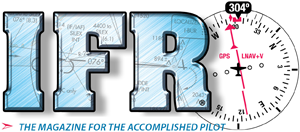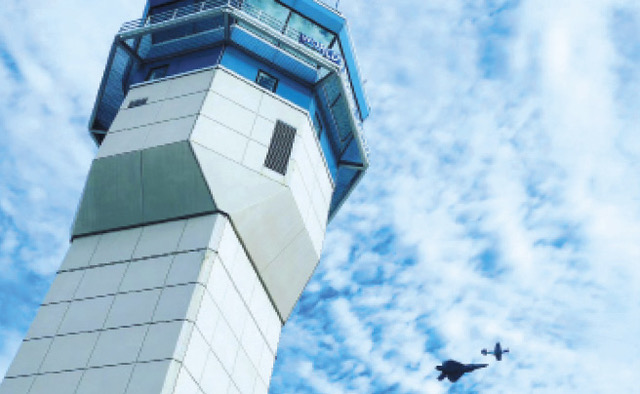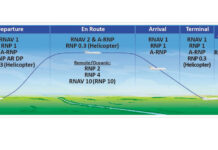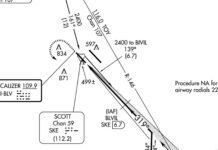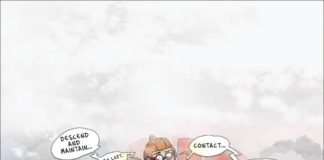Have you flown into AirVenture? You’ve heard stories about the stressful mixed density of traffic across all performance levels with pilots of widely varying skills. In this first of two articles I’ll explore what it takes to control all that traffic in 10 days.
The ATC planning for AirVenture is extensive and nearly never stops.
Pre-OSH
Planning for next year’s AirVenture starts a couple weeks after the current year’s event concludes. It is a year-round thing that continuously takes place to ensure the best facilities, best people, and best circumstances are available for the operation, with the best possible team assembled to work closely together. A bid goes out to controllers just after the beginning of the year. Those interested controllers apply and wait. Selection depends on a lot of different factors with staffing at their facility playing a big part.
After controllers volunteer, a list is sent to the union and AirVenture management. They start selecting controllers who have worked OSH or Sun ’n Fun for four or more years, also called “veterans,” and select “Team leads” from that pool. Prior Team leads will normally get re-selected as Team Leads. After that, the “Veterans” will be selected, then those who have worked the event before, but less than four years, “Limited’s,” followed by those who have never worked an event—the “rookies.”
When the initial selection process is complete, the list goes to the facilities, where staffing is examined to see if that controller can be spared, then they respond. If selected, that controller gets an email with info to start booking travel, a training guide, and a copy of the proposed work schedule. Based on seniority, controllers at OSH (who wear pink shirts) bid a schedule to work, with one or two days off.
Controllers normally travel to Oshkosh on the Thursday the NOTAM starts followed by group training the next day. We go through our training manual (which mirrors the NOTAM but is over 100 pages), local EAA briefings on how things work, and Q&A. Many good people make AirVenture happen behind the scenes, with many being retired pink shirts. Saturday morning, it’s game time.
Pink shirts are sent to five main locations: Oshkosh Tower, a MOOCOW (Mobile Ops/Comms Workstation) for Runway 9/27, a MOOCOW for Runway 18R/36L, Fisk, and Fond du Lac (FLD) Tower. Each has a different level of complexity and workload. We’ll discuss the order of pink shirts you might talk to.
Fisk (VPFIS)
Ahh Fisk. Located 5.6 miles WSW of OSH is everyone’s favorite place to “Rock your wings.” I’ve personally flown the arrival and also controlled there, and love every minute. Our rules are simple—find planes over Fisk, have them rock their wings for identification, assign a runway, have them monitor Tower. With both runways open, typically one plane will “continue along the railroad track to Runway 27” and the next will “turn right 090 and follow Fisk Avenue for a left base to 36L (or enter left crosswind for 18R).
Per the NOTAM, pilots enter the arrival via the chosen transition (per the arrival ATIS). The entry points start at RIPON, then Green Lake, Puckaway Lake, then Endeavour Bridge. All aircraft must start at the published transition, “find an aircraft of similar performance and follow them, 1800 feet and 90 knots over the railroad tracks.” Don’t program your GPS for the magenta line. The Fisk arrival is a VFR arrival and based on following who is in front of you, not your GPS. If you can’t do 90 knots and 1800 feet over the tracks, 2300 and 135 knots are acceptable unless ATC imposes a restriction when the clouds drop and we get more creative. Don’t forget the half-mile spacing.
At Fisk we can see up to eight miles with binoculars. We also have ADS-B to get the big picture for situational awareness. Don’t cut in line lest you be called by tail number and sent to the end of the line. When you’re in range of Fisk, we spot you and try to determine your airplane type. Sometimes we guess correctly, sometimes we fall back on “high wing/low wing,” especially lacking other identifying features. You might also hear “retract,” “taildragger,” “twin,” etc. If you’re going too fast or have insufficient spacing, you could be broken out and sent to the back of line or fit into another slot—if we have enough time.
At Fisk, a four-person team is split between a communicator and two spotters. The Team Lead and Operations Supervisor (OS) watch the big picture, collaborating to direct us to adjust the flow for enhanced safety.
If there is an incident or special event, Tower will tell the OS to stop some or all arrivals. When that happens, we expand the spacing to a mile and will even implement a hold if necessary. We rotate out and take short breaks, but even on break, we’re still watching. If you ever get the opportunity you’re welcome to come visit us. The busiest times are Saturday and Sunday before the show starting at 0700.
Fond du Lac (FLD)
Sometimes the Fisk arrival doesn’t work out and you might be sent to FLD, or maybe that’s where you were going for the show. Pink shirts at FLD staff a temporary tower during AirVenture from 0700 to 2030 local, surface to 3300 MSL and four miles out. There is a small section in the NOTAM about FLD, so even if pilots don’t plan to go there, they should be familiar. From ATC perspective, “it’s a blank slate to work and the sky is the limit.” Basic VFR tower control is the oldest there is. “Blank slate” basically means that the rules and normal added procedures that come with every normal controlled field, do not exist. Because of this and the company FLD brings, we will normally keep it as basic as we can. We use simple instructions such as “report mid-field downwind” and “report four-mile final…” Nothing fancy unless it’s busy.
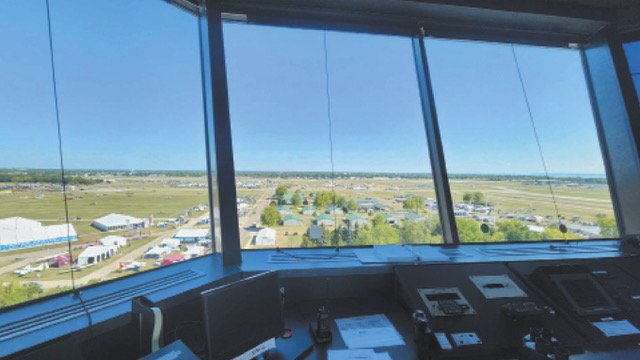
We staff FLD with a local control (Tower), local control spotter, and Ground Control/Clearance. The local controller and spotter are outside on the catwalk, Ground is inside the tower. The spotter uses binoculars and the controller has the radio; those two communicate with each other to make a safe operation. With no radar our eyes are constantly scanning, even if we’re not talking to anyone. The OS sits in the Tower next to Ground, and has the final authority on decisions. Most of the time, they’re chill and let the controllers do their job. We all rotate pretty frequently throughout the day, maybe 30-45 mins on one position, then rotate to another.
FLD traffic can be pretty slow but steady. Despite “crossing” runways, Runway 9/27 is normally closed for AirVenture and used for parking. Yes, it gets full, so they use all the space they have. They’ll even park airplanes right next to the tower. FLD gets busy when something stops arrivals at OSH. Imagine 150-plus airplanes in line to Fisk suddenly told they “Can’t come in and we don’t know how long it will be.”
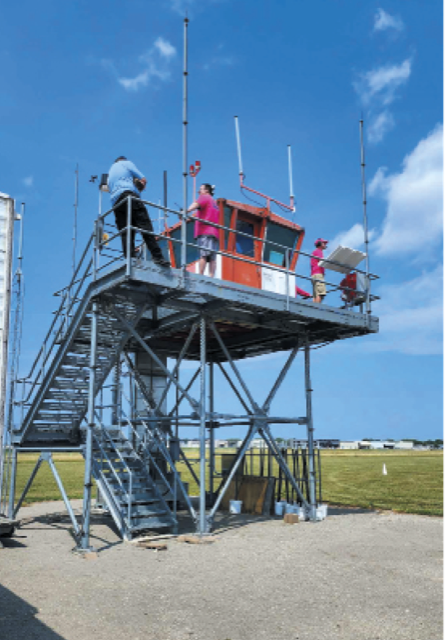
On average, this happens at least once a day. Those who don’t want to (or can’t) hold for extended periods, might divert to FLD “where the fun begins.” We can also utilize the “waiver” to land/depart planes at FLD using only 1500 feet for certain types. Thus, some pilots are slightly uncomfortable landing when another just did and is only ¼ down the runway. While I fully understand this as a pilot, I will say that ATC knows what they are doing. That said, you are PIC and determine what’s safe. If you have a request, simply ask and we’ll do our best to accommodate. Don’t forget to bring your own tiedowns if you plan to park in the grass.
Waivers
A lot of what is done at OSH might seem questionable from a certain point of view, but from the FAA side, all factors are greatly considered, debated, and agreed upon to reduce minimums on certain things while keeping it as safe as possible. There are a handful of waivers in effect for the week. The main one we’ll discuss briefly is the reduced runway separation waiver. I won’t go into extreme detail, but basically this waiver is what allows us to land/depart aircraft closer than at your home airport.
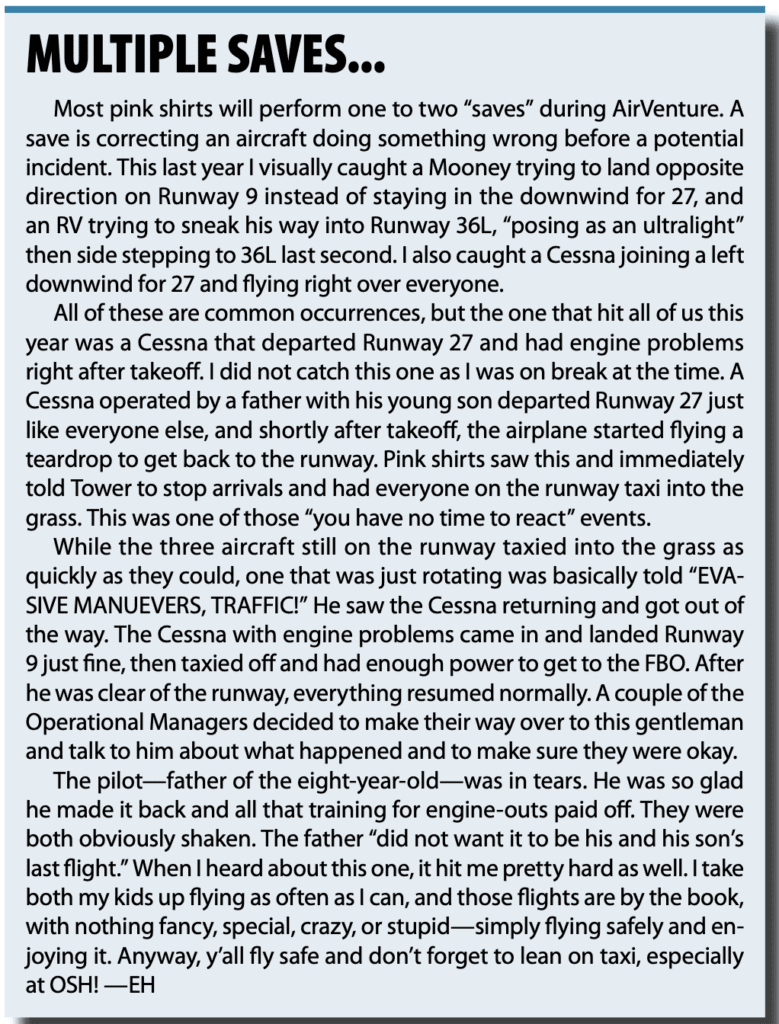
The waiver allows us to only have 1500 feet versus 3000 feet between Category I aircraft (small prop singles), departing and arriving. If a Category II (prop twins under 12,500 pounds) is in front of a Category I, it’s also 1500 feet versus 3000. Category II following a Category I requires 3000 feet versus 4500. Category III (bigger than Category II) aircraft are not part of the waiver, thus any jets or aircraft too big for Category II fall under the Category III and need their normal 6000 feet. One of the main reasons for this is that most insurance and operators don’t allow their pilots to land with anything on the runway.
Another waiver is the “Pilot acknowledgement/Read Back.” In normal circumstances, a clearance to land needs to be read back as well as a lot of other things. However, if we didn’t have this waiver at OSH, the frequency would be too congested. Pilots are instructed from the moment they arrive at Fisk to “monitor”
the radio and only key up if passing flight info or having difficulty. This is the norm for most arrivals. Warbird arrivals and IFR aircraft on final don’t fall under this and are instructed to call Tower at certain points. These aircraft aren’t on the highly structured Fisk arrival, so ATC needs to communicate with them to keep things flowing and safe.
Last one for now is the “Line up and wait” waiver. At your home airport (with control towers that have permission to use LUAW), Tower is allowed to line up and wait one aircraft at a time. We can normally line one up and even clear one at an intersection in front of the one holding in position, and that’s as far as we can go at home. At OSH, we can line up way more than that. At a bare minimum we can do two at the same point, one on the left side of the runway, one on the right. During high departure pushes and with arrivals stopped, we will even put four in LUAW. For safety, we will use LUAW with most of the airplanes before we clear them. This allows pilots to line up correctly and lets ATC see it, to minimize/prevent an aircraft taking off on a taxiway or wrong runway. Of course, there’s always a few that line up the wrong way, but that’s why we do this, to fix what we see before clearing anyone.
Next Up
That’s it for Part 1 in this two-part article. In the next part, I’ll discuss OSH Tower, the MOOCOWs and maybe some things ATC doesn’t get involved in.
Even though it’s orchestrated chaos, Elim Hawkins loves working OSH every time.
